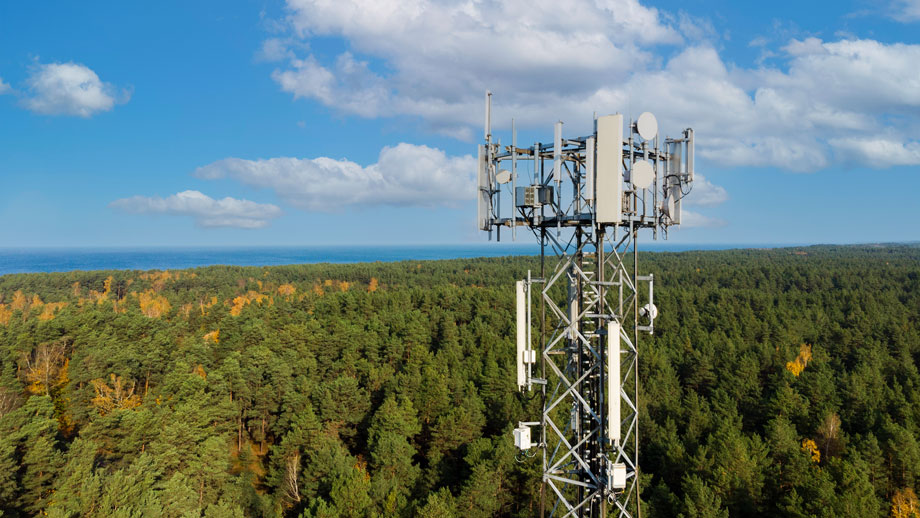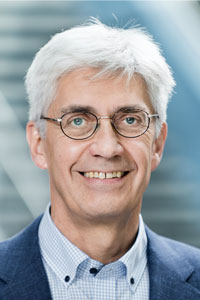"We're not at the mercy of the future"

Lorenz Hilty: Your research area is sustainable digitalization. What exactly do you research?
Lorenz Hilty: We investigate how digitalization can be harnessed for sustainable development and use technology assessment methods to do so. It’s an interdisciplinary field that explores the impact of technological development. What we’re particularly interested in at the moment is the carbon footprint caused by digitalization.
How big is it?
It is estimated that information and communications technologies account for 1.5 to 4 percent of global CO2 emissions, with an upward trend. While this may not sound like a lot, the climate crisis means that we cannot afford to have any sector with a growing footprint. One problem is referred to as the rebound effect: although less and less energy is needed to process data, the total amount of data grows, meaning more energy is expended in the end. We have a current example of this.
Please elaborate.
We researched how the full expansion of the 5G network would impact CO2 emissions. The good news is that energy efficiency will probably get seven times better by 2030. That means that when transmitting one gigabyte of data, 5G will only emit one-seventh of the CO2 it does today, namely 4.5 grams. The bad news is that the network is prepared to handle a ninefold increase in the amount of data it processes. So at first glance you think: wow, 5G is such a clean technology! But when looking closer, we were forced to conclude that in the end, more CO2 would be created, because a ninefold increase in the amount of data exceeds the sevenfold increase in energy efficiency.
So how can digitalization actually be made sustainable, and not just at first glance?
Whether digitalization contributes to sustainability is not a technical but rather a political question. We need a broad debate about the purpose and aims of digitalization. This is why I took part in an international project that tried to shift the political levers towards taking the aimless digitalization that’s underway today and setting it on a path towards sustainable development. The result is the Digital Reset Report.
And what exactly are those political levers?
Digitalization can help to make agriculture more environmentally friendly, to bring about a circular economy, to decentralize the energy supply, and to build less by using existing building stock in a different and more efficient way. All of this can be more easily accomplished with digital technologies, but there needs to be the political will to do so. Digitalization won’t accomplish this by itself.
You and the co-authors of the Digital Reset Report suggest that digitalization needs to be thought about and implemented in a new way. That mostly doesn’t mean economically but it’s more holistic, meaning that the social and ecological effects of technological innovations need to be factored in as well. You call this approach systems thinking. What does that mean?
Systems thinking is not a new idea. It’s a pretty obvious idea to analyze the effects of changes made to a dynamic system. In doing so, you take into account the players, their relationships and their decisions. The rebound effect we talked about earlier is an example of systems thinking. This effect can be seen in many of our economic activities, but it’s always especially prominent in connection with digital technologies. Less material, energy and time needed per unit of data creates incentives to generate more data. In principle, there’s nothing wrong with this, but on the whole it doesn’t lead to any resources being saved if the amounts grow faster than the efficiency gains.
But that’s exactly what happens: increasing amounts of data are being produced, saved and transferred. This means that energy consumption will increase.
On the whole, while digital technologies do consume energy at an alarming and growing rate, their energy use is still far less than the transportation, construction or food sectors. The central question concerns purpose. For example, if we train AI systems, facilitate cryptocurrencies or develop the metaverse, we should ask ourselves: can we achieve something here that makes the energy consumption and resulting emissions really worth it?

One core term used in discussions about sustainable development is sufficiency. What does that mean?
It simply means that we accept that not everything can grow infinitely on a finite planet with a fragile ecosystem. There has to be an idea of ‘enough’ that replaces the model of exponential growth, at least in the material world. The lifecycle analysis, for example, lets us predict how a product effects CO2 emissions or creates other environmental externalities, from raw material extraction all the way to disposal. Simulation models allow us to estimate how much that amounts to over the coming decades. However, it's important to understand that the future is not pre-determined. We’re not at the mercy of the future as if it were tomorrow’s weather. We can shape the future with technology. Possible futures can be described and made tangible using scenarios. For example, we worked together with Empa and other partners on a project called Post-Fossil Cities, where we developed an educational game in which players try to influence an urban environment so that it doesn't emit any more greenhouse gases from transportation, heating, construction, etc. starting in the year 2050.
What can you learn by playing this game?
How things are related in a complex system like a city. The lesson is that a dynamic system of this kind reacts very, very slowly to interventions. This means that you have to act with the far future in mind.
What purpose do these scenarios and models serve?
They're the basis for debates about how we can achieve sustainable development. This isn’t a value-neutral affair – it requires discussions about visions of the future worth living. Of course, values do play a part when you’re categorizing the impact of new technologies into opportunities and risks. That's why we're working on a participatory method for developing visions of the future in our project Paths Towards Sufficiency. This method is based on the fact that not everything can or should grow indefinitely in a materially finite world, but there are some exceptions. The question “What should and should not experience growth in the future?” is an astonishingly good door opener for discussions about the future. Unfortunately, this question gets asked far too little.
So, what should and should not grow in the future?
A surprising number of participants in our workshops name “time spent doing meaningful activities” and “good relationships” under “what should grow.” What shouldn’t continue to grow is everything that increases inequality or destroys what we need to live. So far, no one has formulated a future vision involving upgrading their smartphone more often.
Is it possible to steer and use digitalization for sustainable ends?
Climate change and biodiversity loss are urgent problems that should have been addressed yesterday. The same is unfortunately true of digitalization. There isn’t a lot of time left for us to think things over. Therefore, I’m afraid that scientific research and findings are reaching the political and economic spheres too slowly to steer digitalization on a more sustainable course. However, it’s our responsibility to keep trying.